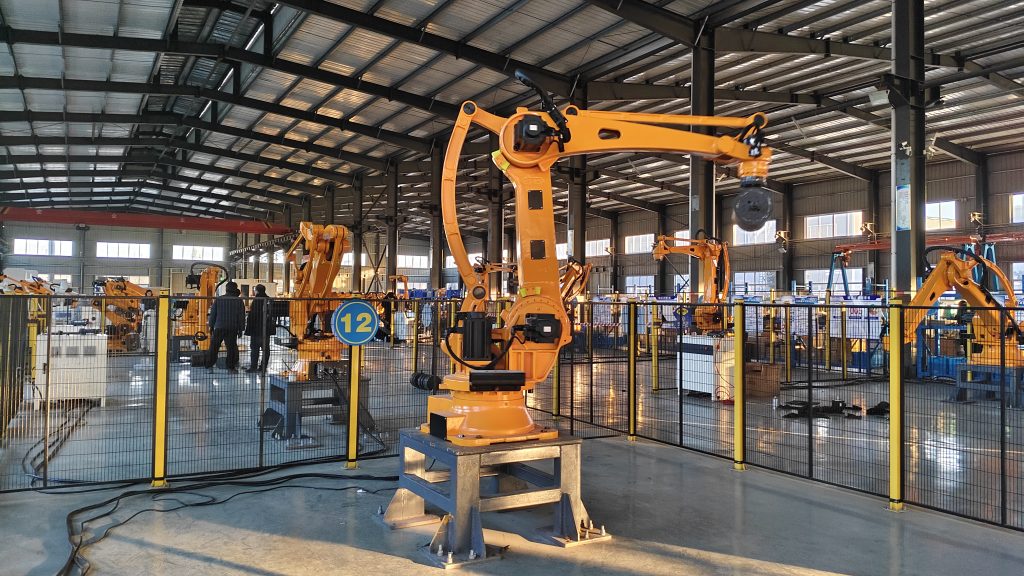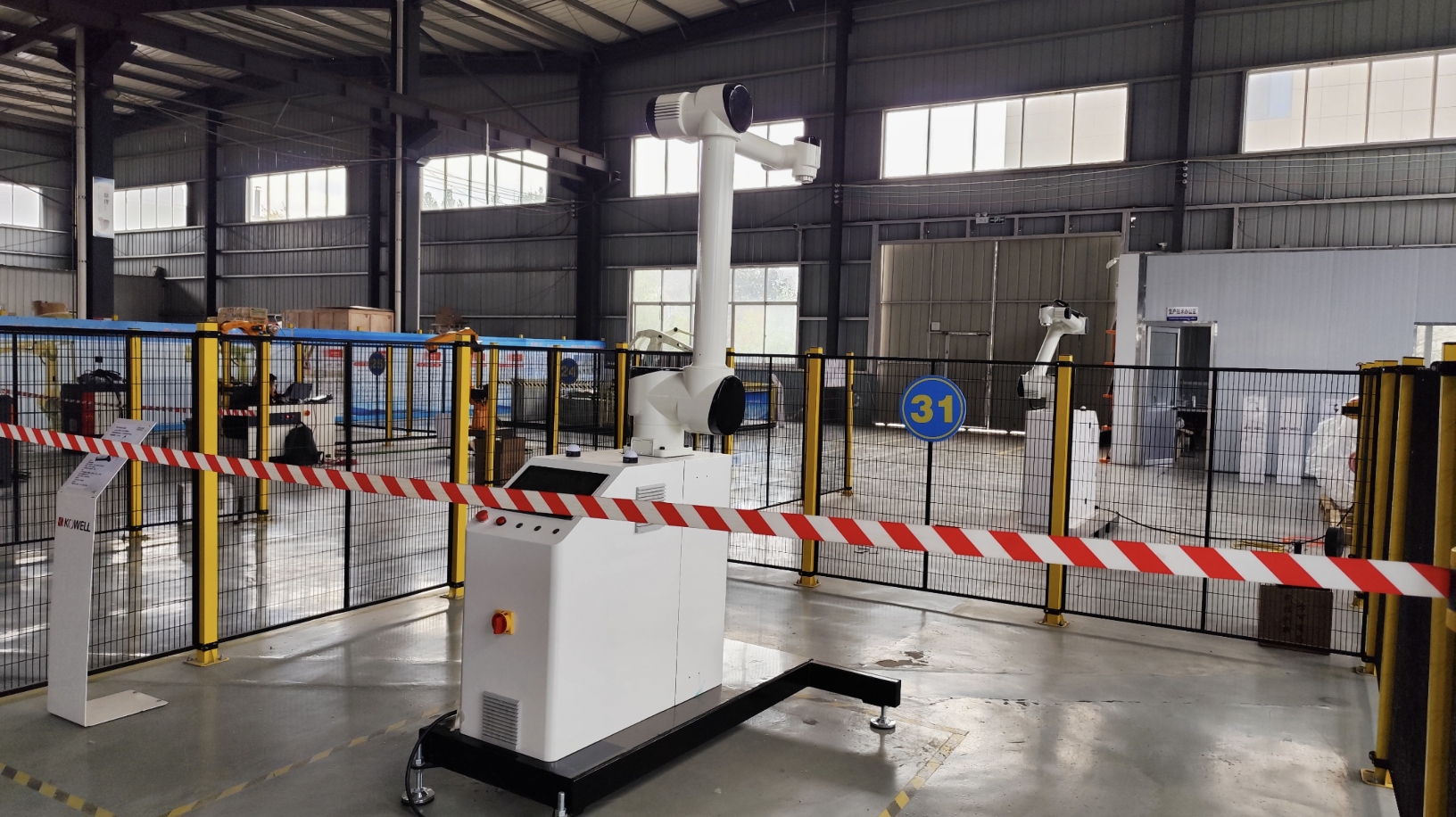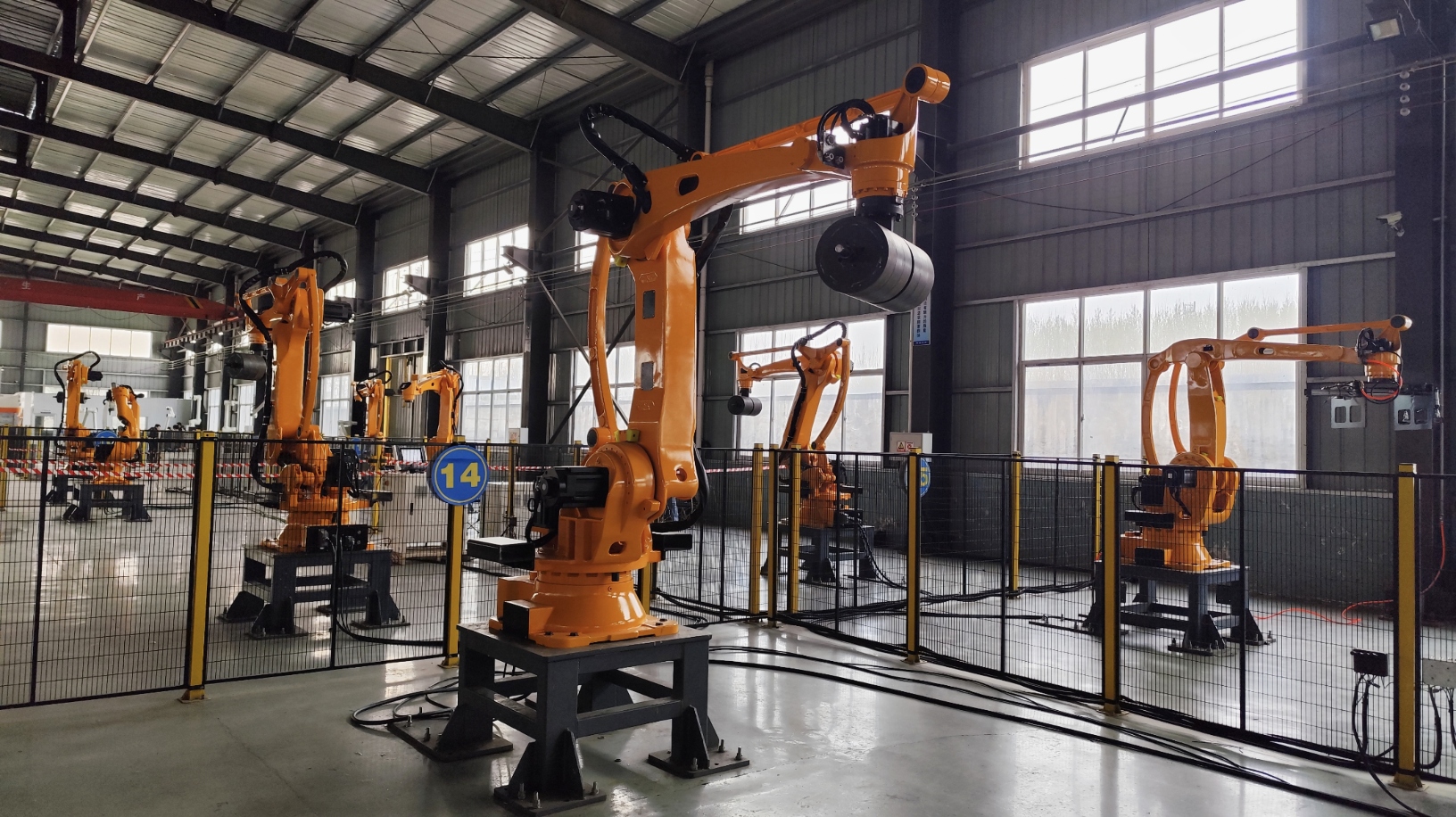In the modern logistics industry, with the surge in order volume and the diversification of commodity types, traditional warehousing and handling methods can no longer meet the growing demand. Manual palletizing and sorting are inefficient and prone to errors, resulting in a lot of waste of time and cost. As an efficient and accurate automation tool, robotic arms are rapidly replacing manual operations, especially in the palletizing and sorting process, showing great advantages. This article will explore how four-axis palletizing robotic arms can optimize the palletizing and sorting process and improve warehousing efficiency.
Palletizing is a vital part of warehousing operations, involving stacking goods of different shapes, sizes and weights onto pallets for storage and transportation. Traditional manual palletizing requires a lot of physical labor, and often leads to unstable palletizing and even damage to goods due to manual fatigue or improper technical operation. The emergence of the robot arm just solves these problems.
The four-axis palletizing robot can quickly and accurately grab the goods from the conveyor belt through a preset program and stack them according to certain rules. Through accurate positioning and grabbing technology, the robot can automatically determine the shape and weight of the goods, select the appropriate stacking method, and complete the task in a short time. This automated operation not only greatly improves work efficiency, but also effectively avoids common errors in the manual palletizing process, ensuring the safety and stability of the goods.
In addition to palletizing, sorting is also a high-frequency and complex link in the warehouse. Traditional manual sorting not only consumes a lot of time, but is also prone to errors, especially when the order volume is large or the variety of goods is wide. The introduction of robotic arms can significantly improve sorting efficiency and accuracy.
In the sorting operation, the robotic arm can quickly extract goods from the shelf and deliver them to the designated location according to the order requirements through high-speed and accurate grasping and placement functions. This process is completed automatically by the robotic arm without human intervention, which not only reduces human errors, but also speeds up the processing of orders. The robotic arm can quickly identify the goods through its accurate grasping ability, and efficiently sort according to the preset operating procedures, making the entire sorting process smoother and more accurate.

1.Efficiency: The robot can complete a large number of repetitive tasks in a short time, significantly improving the efficiency of the operation. For example, in the palletizing process, the robot can stack items faster and more accurately than manual operations, greatly shortening the processing time of each task.
2.Stability and accuracy: Compared with manual operations, the four-axis palletizing robot can maintain highly consistent work performance. Even in complex or heavy working environments, the robot can continue to operate efficiently, avoiding errors caused by fatigue or inattention in manual operations.
3.Flexible adaptability: Modern robotic arms have strong adaptability through modular design. They can flexibly adjust the gripping method and stacking mode according to different commodity shapes and sizes to meet a variety of different work needs.
4.Reduce labor costs: Since the robotic arm can work 24 hours a day, it reduces dependence on manual labor, thereby significantly reducing labor costs. Warehouse operators can be freed from heavy physical labor and focus on higher-level management or supervision work.
Introducing robotic arms for automated palletizing and sorting is not just a matter of improving efficiency, it also fundamentally improves the quality of warehouse work. First, robotic arms reduce manual intervention and improve the standardization and consistency of the operation process, which is particularly important when managing large-scale warehousing efficiently. Secondly, robotic arms can accurately stack items, reduce the damage rate of goods, and improve the operational safety of the entire warehouse.
With the continuous advancement of technology, the cost of robotic arms is gradually decreasing, and their functions are becoming increasingly powerful. For many large companies, investing in robotic arms has become an important way to improve logistics efficiency and reduce costs. More and more storage facilities are achieving intelligent upgrades by introducing robotic arms to replace manual labor to complete tedious work tasks.
With the development of science and technology, automation technology is gradually penetrating into various industries, and the four-axis palletizing robot arm, as an important part of this technology, is driving the warehousing industry to develop in a more efficient and accurate direction. By optimizing the palletizing and sorting process, the robot arm not only improves the warehouse's operating efficiency, but also reduces labor costs, reduces error rates, and improves cargo safety. With the continuous maturity of intelligent technology, the application of the robot arm will be further expanded, and the future warehouse will be more intelligent and automated, completely changing the traditional working model.


Hello, the current customer service is offline. You can leave your contact information and the staff will respond to you as soon as possible!